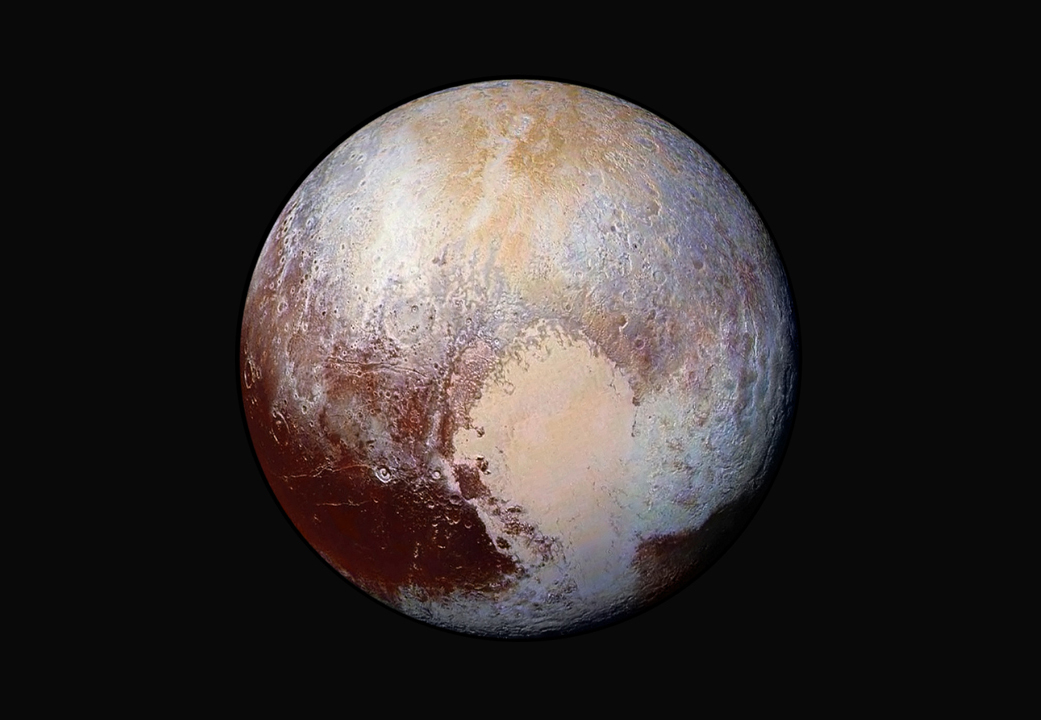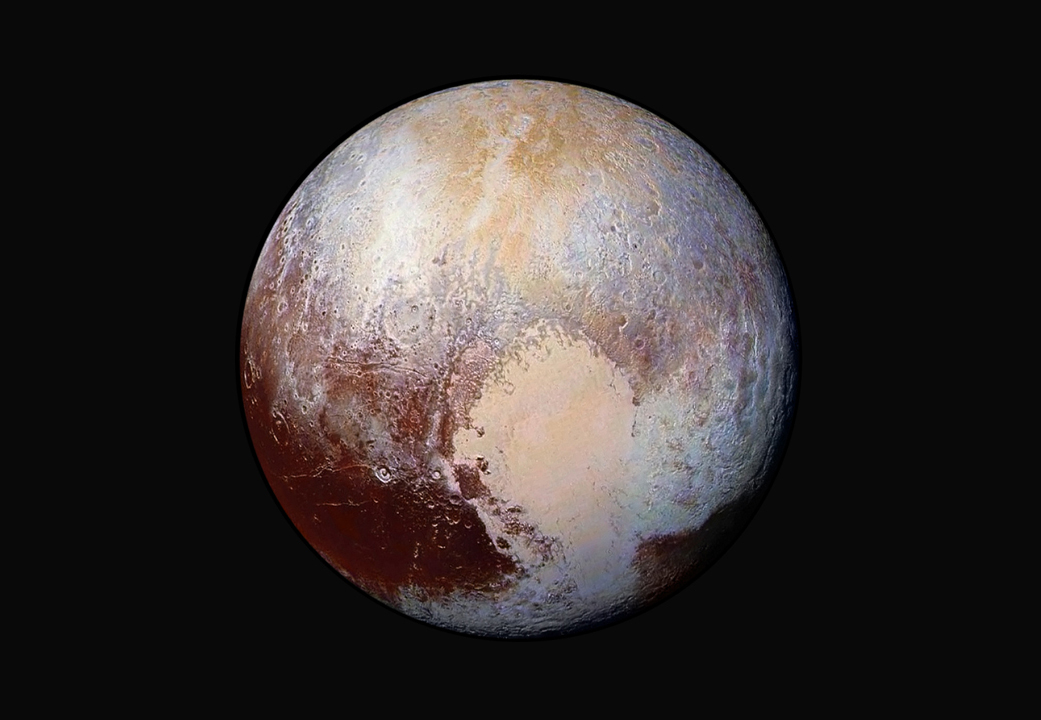Pluto Dazzles in False Color

| Credit | NASA/JHUAPL/SwRI |
|---|---|
| Language |
|
New Horizons scientists use enhanced color images to detect differences in the composition and texture of Pluto’s surface.
When close-up images are combined with color data from the Ralph instrument, it paints a new and surprising portrait of the dwarf planet.
The “heart of the heart,” Sputnik Planum, is suggestive of a source region of ices. The two bluish-white “lobes” that extend to the southwest and northeast of the “heart” may represent exotic ices being transported away from Sputnik Planum.
This high-resolution, false color image of Pluto is my favorite. The New Horizons flyby of Pluto on July 14, 2015 capped humanity’s initial reconnaissance of every major body in the Solar System. To think that all of this happened within our lifetime! It’s a reminder of how privileged we are to be alive and working at NASA during this historic era of space exploration. - Laurie Cantillo, NASA Planetary Science Public Affairs
Four images from New Horizons’ Long Range Reconnaissance Imager (LORRI) were combined with color data from the Ralph instrument to create this enhanced color global view. The images, taken when the spacecraft was 280,000 miles (450,000 kilometers) away, show features as small as 1.4 miles (2.2 kilometers).

